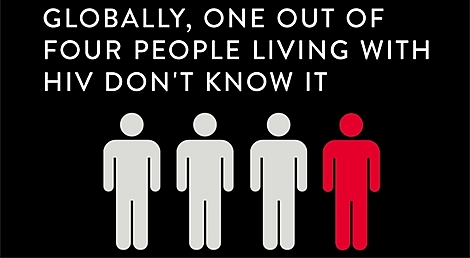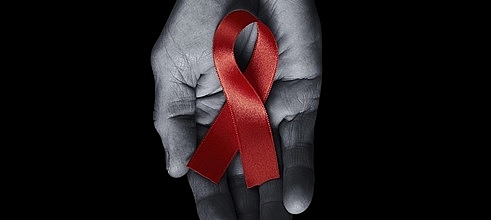Discussion with Abbott’s “Virus Hunter” about life-changing technology
As an Abbott expert, could you provide a glimpse into the global status of HIV/AIDS?
 |
| Gavin Cloherty, head of Infectious Disease Research, one of Abbott’s leading Virus Hunters |
Nearly 37 million people around the world are living with HIV. Today, three out of four people living with HIV know their status, the vital first step to getting treatment.
Thanks to sustained access to antiretroviral therapy (ART), many 58 per cent of HIV infected people are living longer and healthier, gradually reducing the risk of transmission. Nevertheless, the HIV virus rapidly evolves into new strains, making it more difficult to eliminate.
For more than 30 years, Abbott’s research and diagnostics work has helped to identify these new strains in the fight against HIV/AIDS. We were especially proud that our first HIV blood test was approved by the US FDA in 1985.
Ever since, our broad range of tests have spanned the entire continuum of care for people at risk for HIV or living with the virus, whether they are getting treatment at a public health clinic in Chicago or living in a remote village in Uganda.
 |
| About 9.25 million people do not know they are infected with HIV |
How important is it to have an early HIV test?
An early and accurate HIV test result critically helps healthcare professionals connect the HIV-infected to effective treatment and transmission prevention. To reach the 90-90-90 goals* it is the most important to make testing technologies accessible to everyone, especially those in remote areas. Outside of the US, Abbott is helping address this issue with the collection of a few drops of dried blood on a special paper. These samples can be transported without immediate refrigeration for testing, making it possible for clinicians to monitor their patients’ HIV treatment response.
Also, Abbott is developing rapid diagnostics, offering the right care at the right time with a comprehensive portfolio of tests that span the continuum of HIV care. In Sub-Saharan Africa, we currently supply the vast majority of HIV screening tests to fight the disease, as well as monitoring and management tools to help ensure patients receive the treatment and care they need.
Another gap that needs to be addressed is diagnosing HIV in infants, for whom time is of the essence. According to a report, nearly half of HIV-positive babies who do not receive timely treatment die before they reach the age of two. Beyond the US, Abbott is tackling this challenge by creating an early infant diagnosis test that offers same-day results at the point of care for faster access to treatment.
In Vietnam, how many diagnostic platforms has Abbott launched that can test for HIV?
In Vietnam, Abbott has a breadth of HIV tests which are available on the Alinity and ARCHITECT systems, screening more than 60 per cent of the world’s blood supply. These tests are continually updated for the ongoing research development supported by our Abbott Global Viral Surveillance Program. We are proud to say that our testing solutions can have life-changing impact on people around the world.
Could you please give us more information about the ongoing researches testing HIV on a nationwide scale of Vietnam?
While Africa has long been associated with offering insights into the genetic diversity of HIV, more recently different strains have been found in the Asia-Pacific region. To fight against HIV and help eliminate the AIDS epidemic, we are touching nine Asia-Pacific countries, including Australia, China, India, Laos, Nepal, Pakistan, the Philippines, Thailand, and Vietnam.
In Vietnam, we are conducting an ongoing nationwide HIV study among at-risk populations. The initial results showed a very high incidence rate of HIV among men who were newly found to have HIV within six months. This result was presented at various President's Emergency Plan for AIDS Relief (PEPFAR) forums, scaling up of the use of pre-exposure prophylaxis in Vietnam, directly impacting PEPFAR policy, which can further reduce the number of new HIV infections among high-risk population.
Which difficulties is Vietnam facing to reach the 90-90-90 target?
At the end of August 2017, 121,399 in the total 209,000 infected Vietnamese were treated with ART, approximately 58.1 per cent. Back in 2014, Vietnam was the first Asian country to adopt the 90-90-90 target, but a study published in 2017 suggests men who have sex with men in Vietnam risk being left behind. According to UNAIDS, only 65.7 per cent of men who are in an intimate relationship with men know their HIV-related status, which means one-third of them are unaware of their current HIV infection and do not receive any treatment.
What recommendations would you offer Vietnam? Is there any suitable surveillance programme to eliminate HIV/AIDS?
To help Vietnam achieve UNAIDS target, we need to use all the tools at our disposal, including testing. People usually do not get tested for HIV early because they feel fine. However, getting tested is extremely important because a fast and accurate result is the key righto connecting infected people to treatment and prevent virus from spreading.
Abbott has partnered up with the Vietnamese government to eliminate the AIDS epidemic. How does this partnership work?
Currently, we are in partnership with the National Institute of Haematology and Blood Transfusion to determine the prevalence of HIV and other sexually-transmitted infections – Syphilis, HSV-2, Neisseria gonorrhoea, and Chlamydia trachomatis – and identify risk factors associated with HIV and high prevalence sexually-transmitted infections among men who have sex with men in Hanoi.
 |
| Abbott is conducting several nationwide research projects to help Vietnam survey the spread of HIV and eliminate AIDS |
These researches are part of our Abbott Global Viral Surveillance Programme. Introduced in 1994 to monitor the diversity of the HIV virus globally and ensure our tests are always up-to-date, this programme has marked many breakthroughs within our work to eliminate the AIDS epidemic.
The unique challenge here is to stay ahead of new strains that can evade diagnostic detection, immune responses, treatments, and vaccines, serving as a “vital tool” against evolving threats. With more than 70,000 samples collected over 20 years from 45 countries on six continents, we track virus evolution, challenge our performance on Abbott’s diagnostic tests, and drive the continual improvement of testing technology. To date, more than 100 studies have been published in support of this research.
Since we are living in a global village – these new viral strains are just a plane ride away, which makes it crucial to keep track of viral diversity to ensure our tests can detect them.
What are the impacts of the Abbott Global Viral Surveillance Programme?
As a leader in screening the world’s blood supply, Abbott makes sure that the diagnostic tests available are accurate no matter what strain is present. Currently, we are one of only two institutions in the world to identify and characterise these viruses.
In 2009, through this programme, we discovered the HIV Group P strain in a sample taken from a Cameroonian woman visiting France. While this woman kept testing negative for other HIV tests, our molecular test detected that she had HIV. What this showed us is that if we do not update our tests, it will be really hard to conquer the viral diversity of these new strains: if a virus cannot be found through testing, it cannot be treated. That is how outbreaks happen.
| *The global 90-90-90 plan set by the Joint United Nations Programme on HIV/AIDS (UNAIDS): - 90 per cent of all people living with HIV will know their HIV status; - 90 per cent of all people with diagnosed HIV infection will receive sustained ART; - 90 per cent of all people receiving ART will have viral suppression. |
What the stars mean:
★ Poor ★ ★ Promising ★★★ Good ★★★★ Very good ★★★★★ Exceptional
 Tag:
Tag:
Related Contents
Latest News
More News
- Protect what’s next: towards a future free from meningococcal group B disease (December 05, 2025 | 18:00)
- New ILO report offers policy recommendations for disability inclusion (December 04, 2025 | 15:18)
- Maternal job loss may affect children’s mental health, research shows (December 03, 2025 | 19:11)
- Women lead Vietnam’s shift to climate-resilient agriculture (December 03, 2025 | 19:10)
- Experts highlight unpaid care work as key barrier to gender equality (December 03, 2025 | 15:15)
- Opportunities and inequalities for women workers in Vietnam's garment industry (December 03, 2025 | 09:00)
- Vietjet flights carry love to devastated central region (November 28, 2025 | 11:35)
- New initiative to boost the fight against domestic violence (November 26, 2025 | 10:00)
- South Korea funds IOM relief for Vietnam’s typhoon-affected communities (November 24, 2025 | 15:33)
- AI and human-centred values set to shape the future of HR in Vietnam (November 21, 2025 | 18:04)



























 Mobile Version
Mobile Version